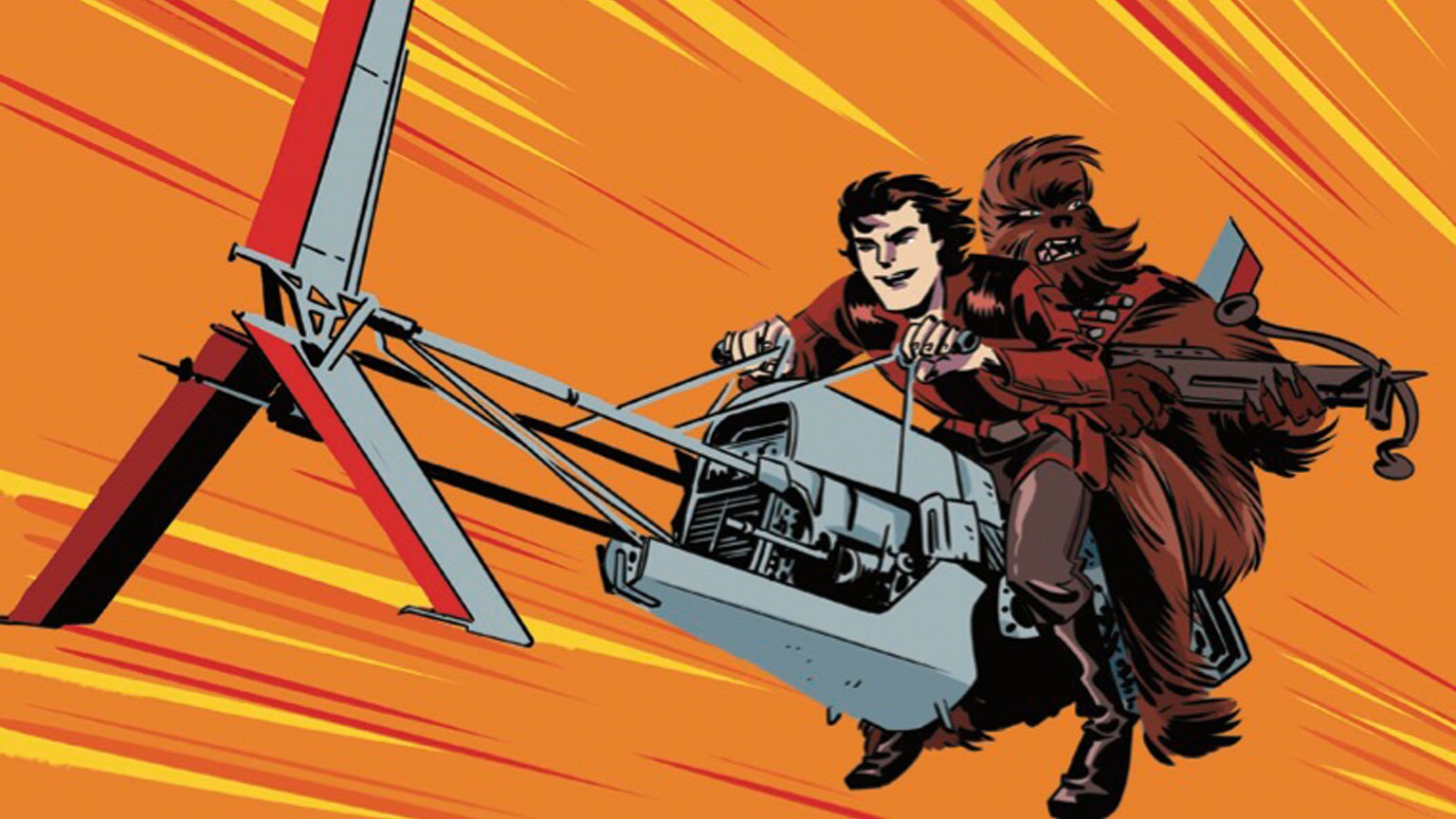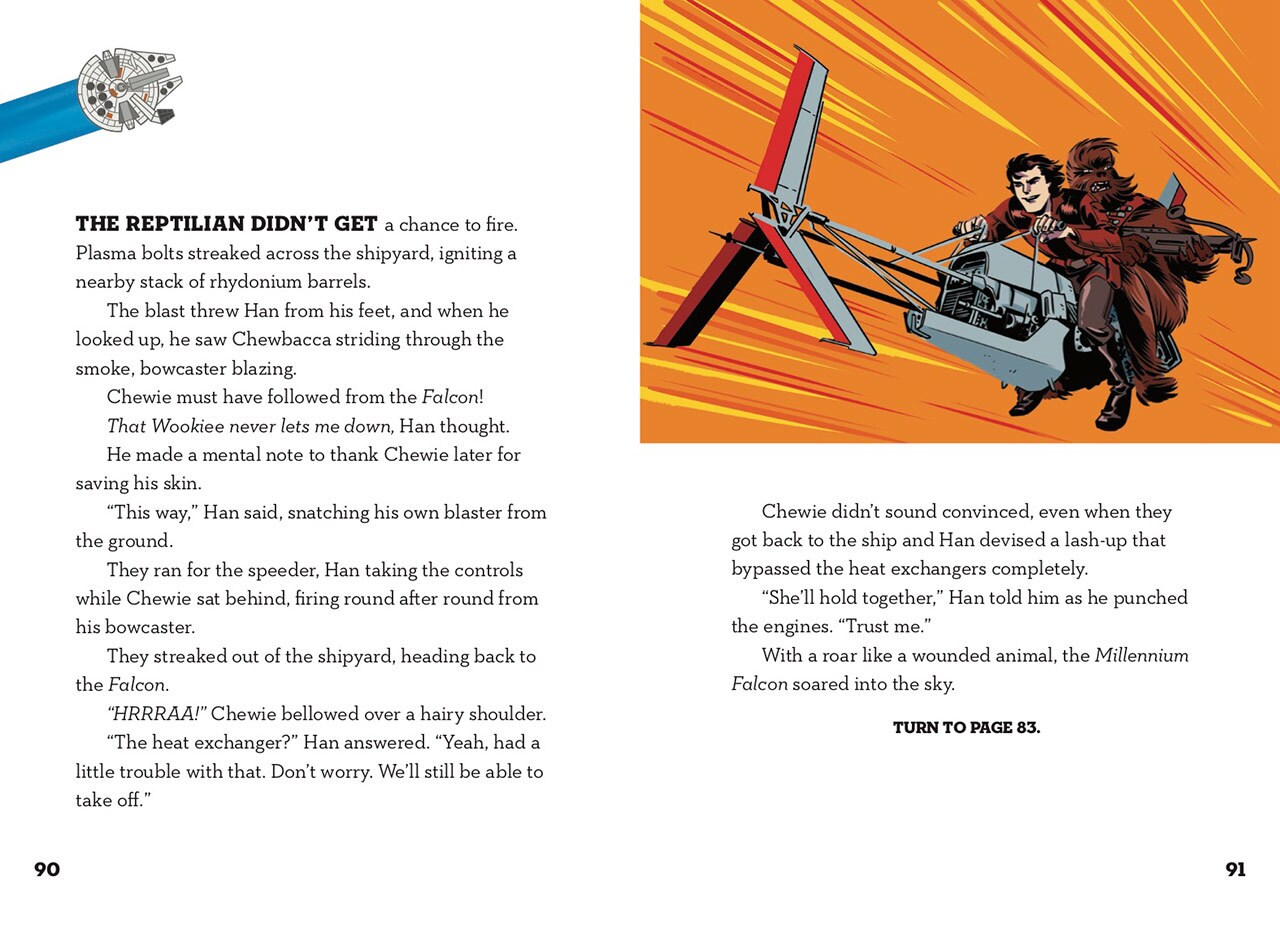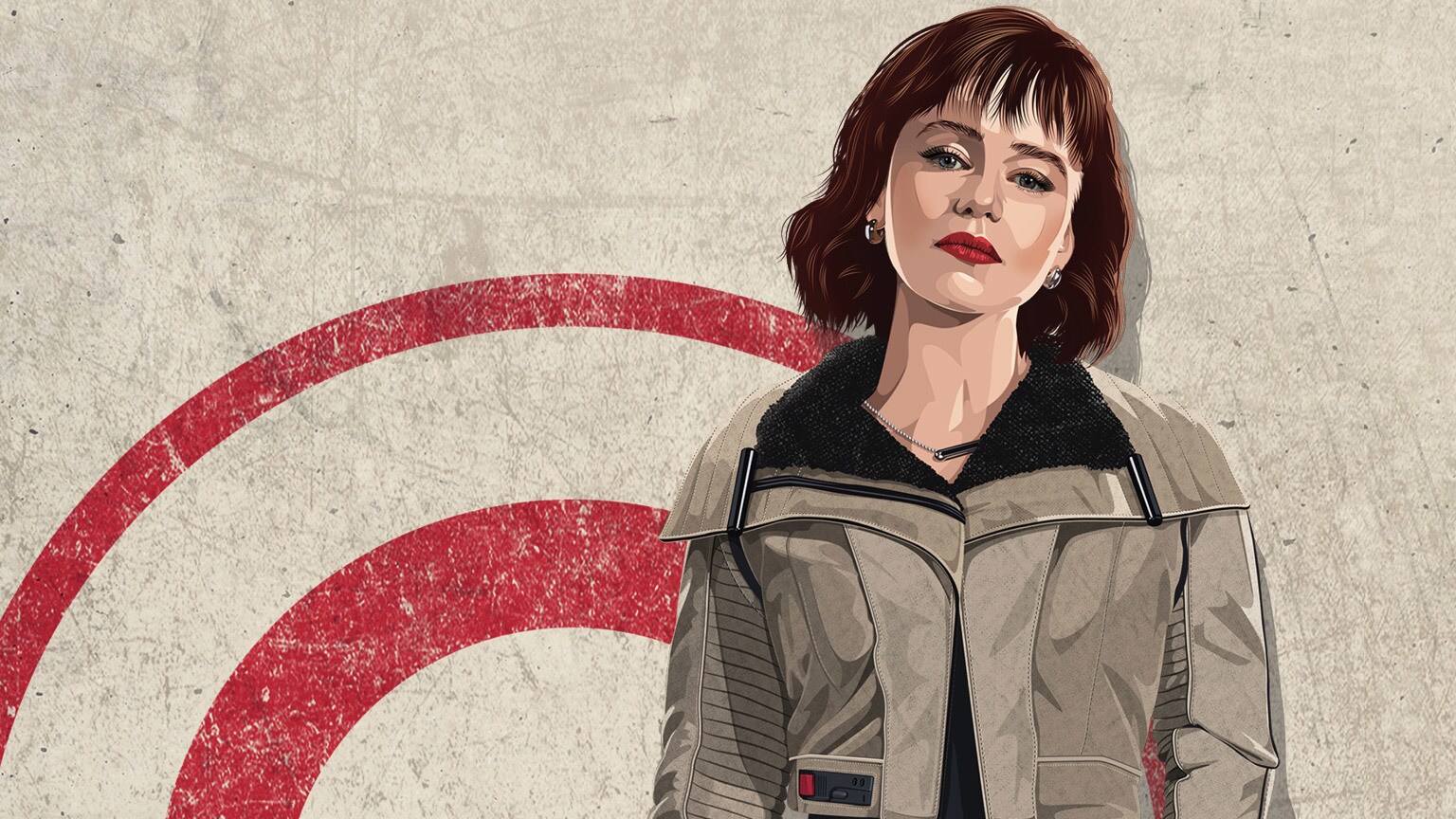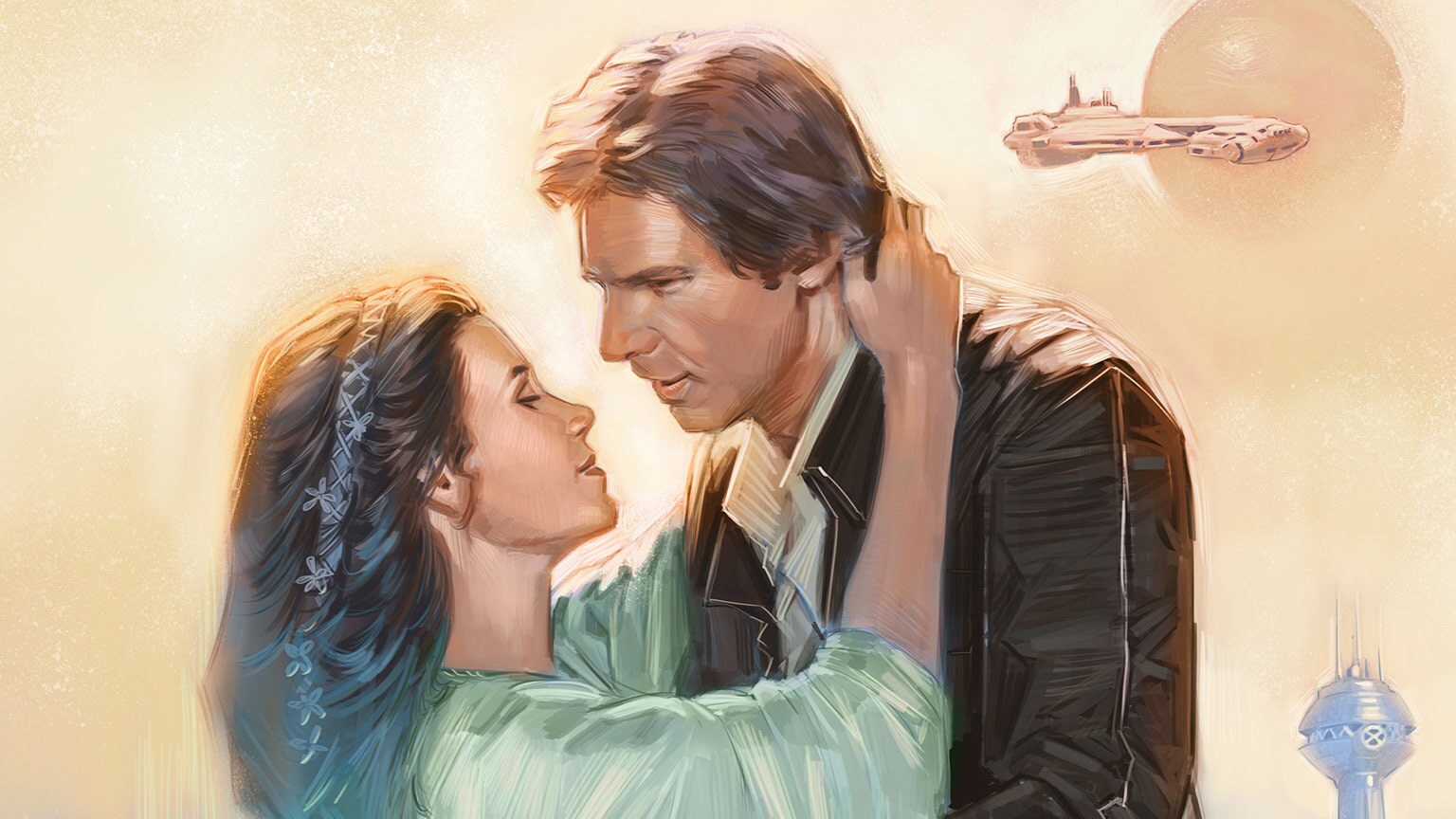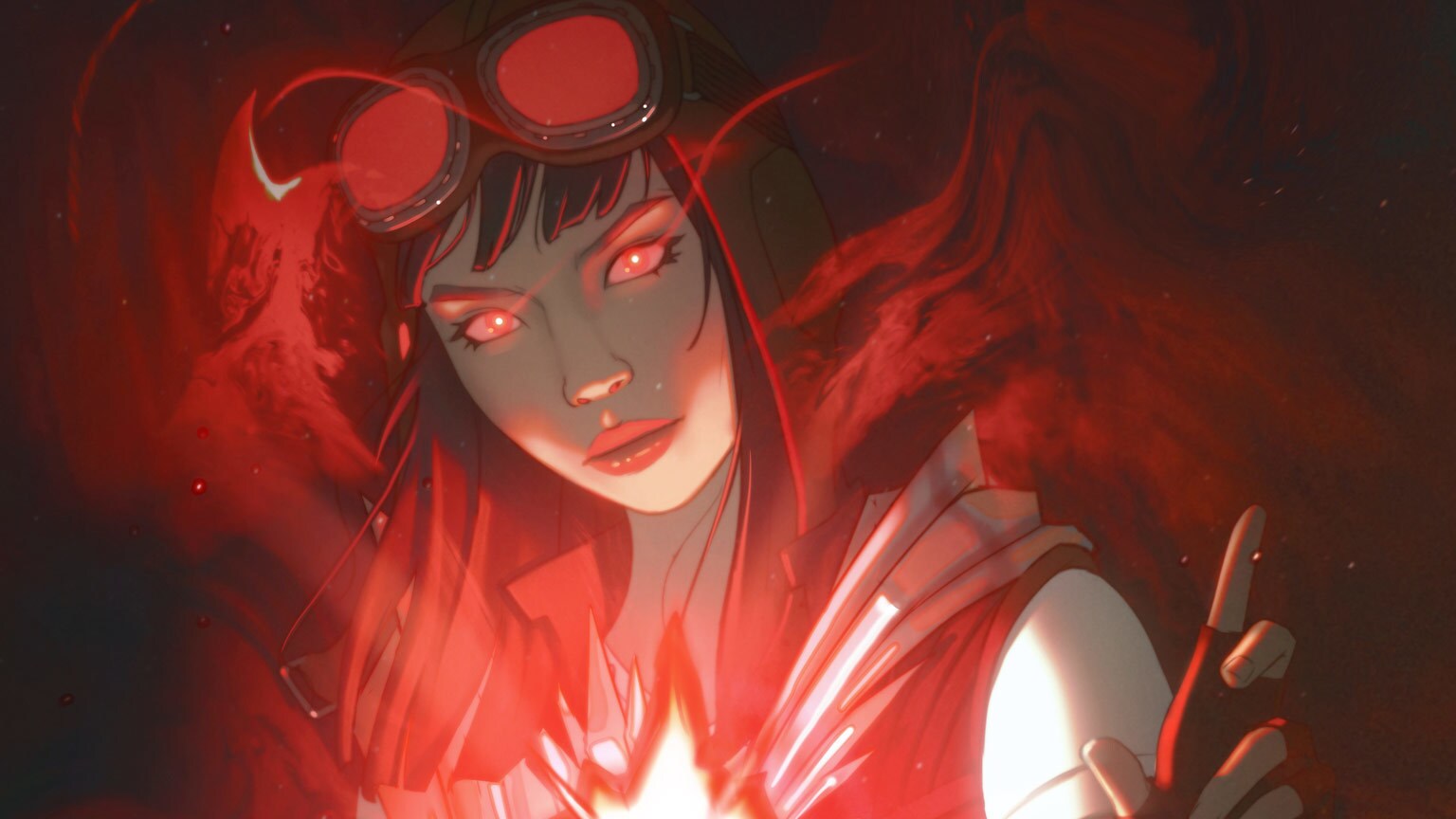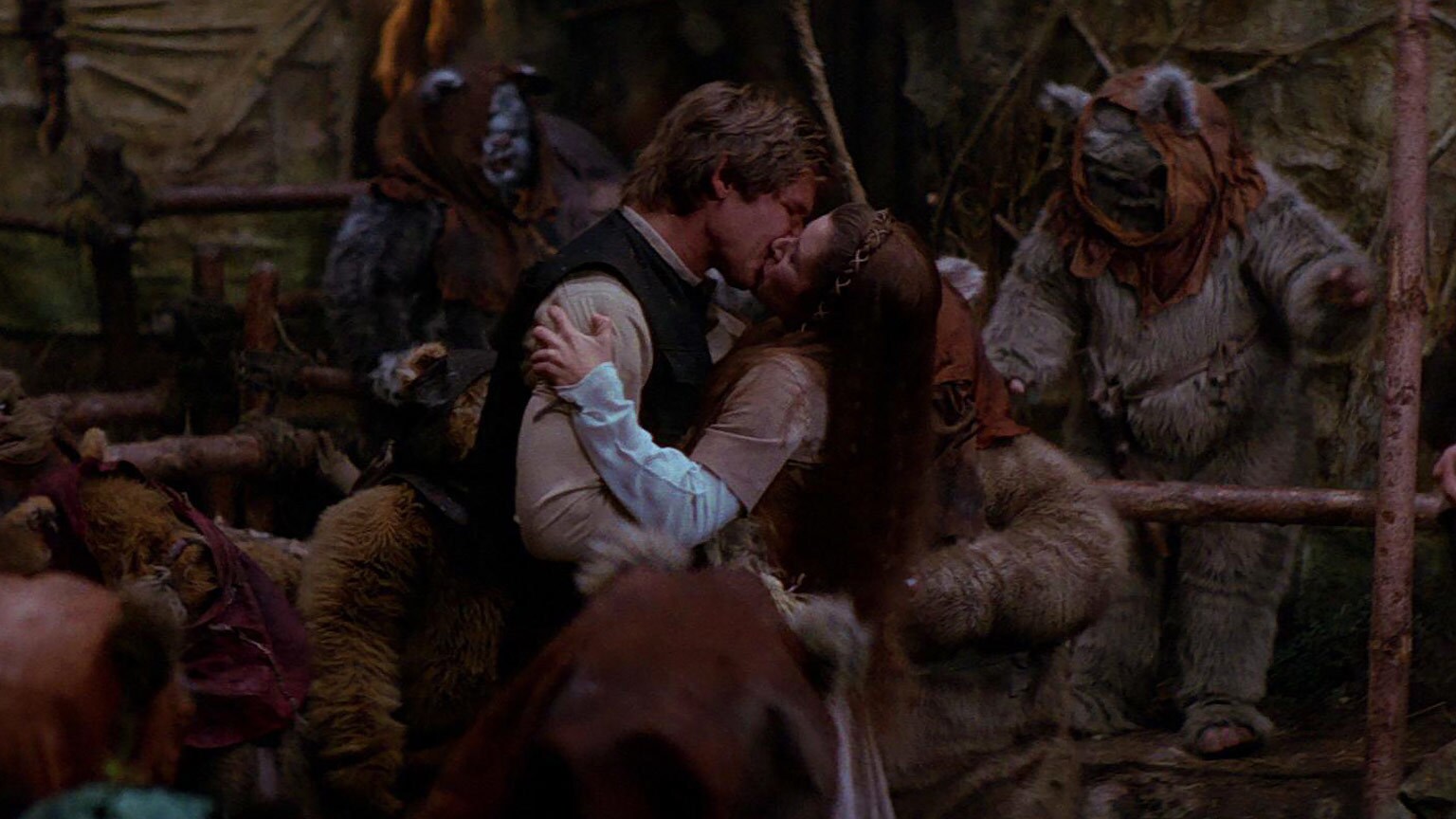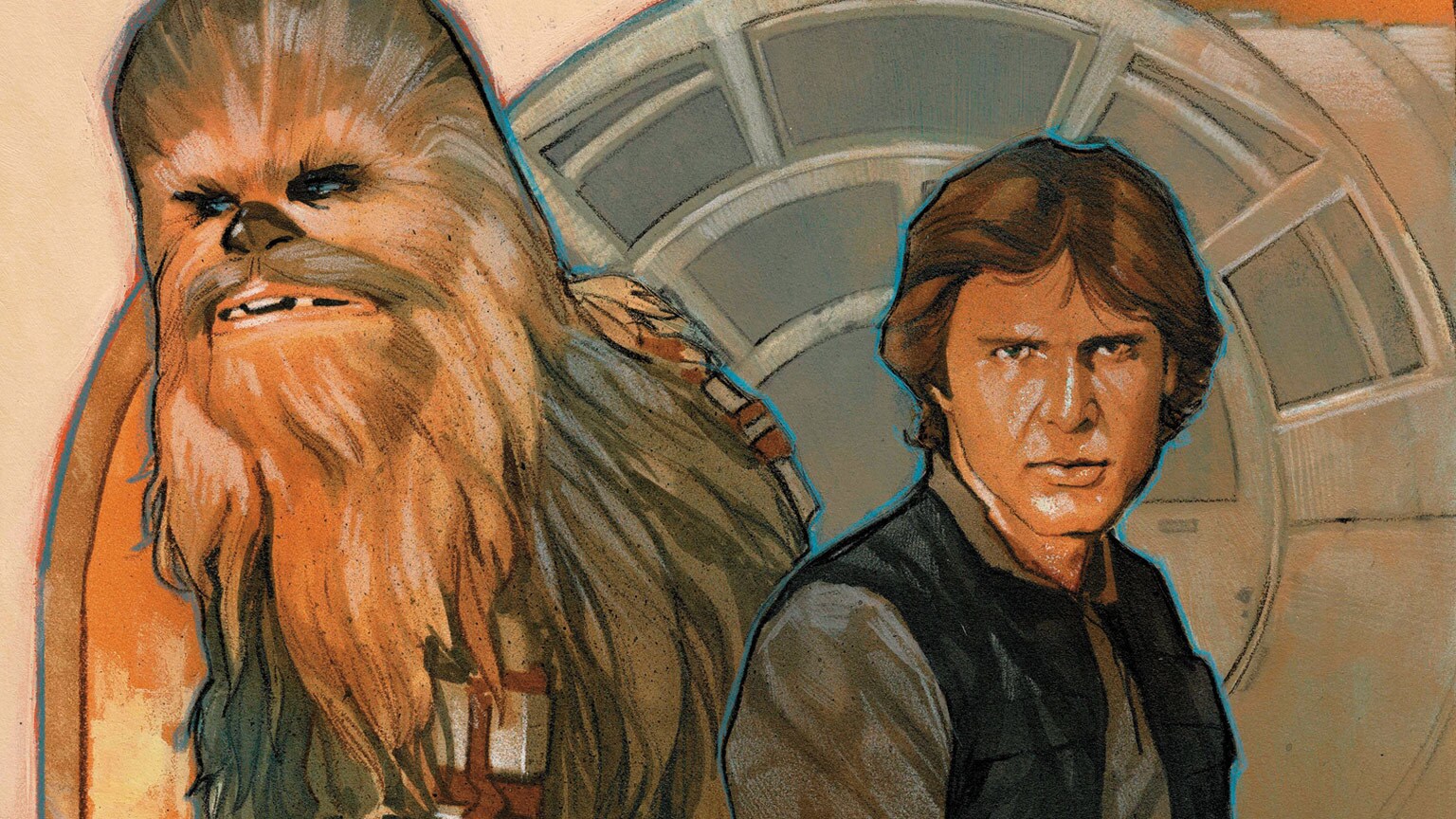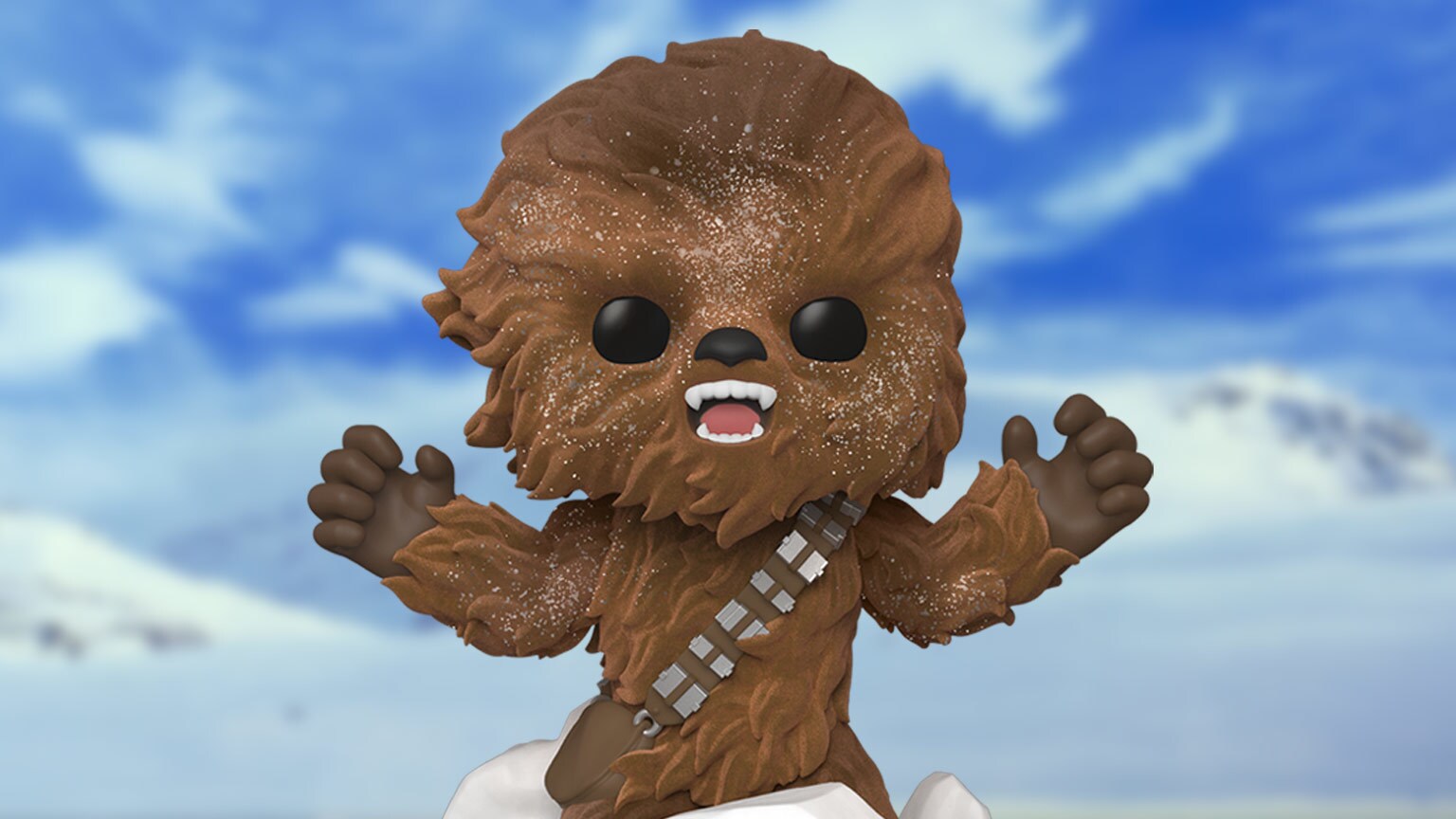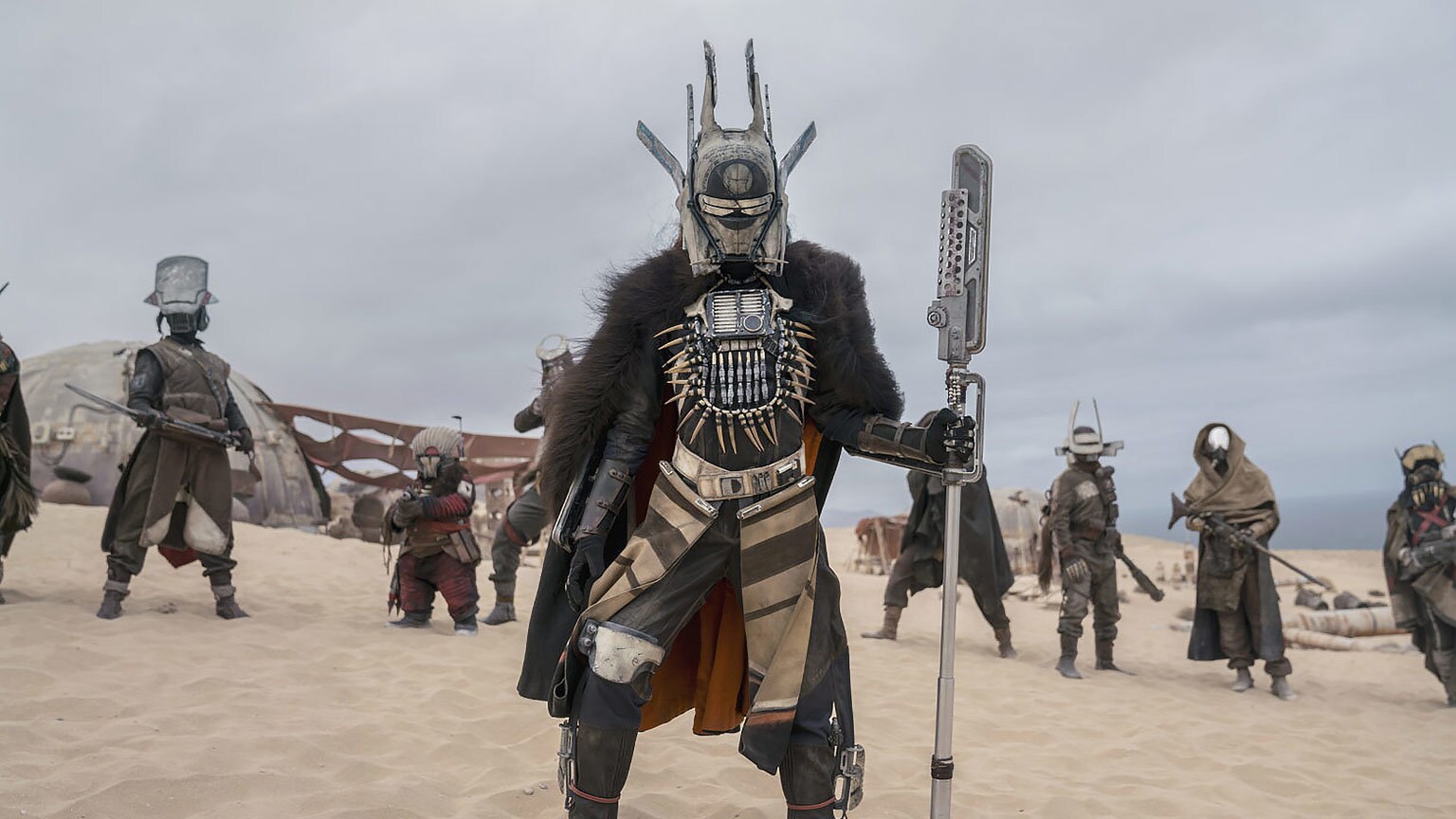There are a lot of great books for all ages coming out to coincide with the release of the new movie Solo: A Star Wars Story, but in only one of them can readers choose their destiny and control the direction of the story itself. Star Wars: Choose Your Destiny: A Han & Chewie Adventure is the first of a series of new books from Lucasfilm Press.
Readers must make decisions for Han Solo and Chewbacca, faced with multiple problems after their delivery to Jabba the Hutt goes awry. The book is aimed at young readers (ages 6-8) but like all Star Wars stories, readers of any age can dive in to experience their own Star Wars story.
Writer Cavan Scott and artist Elsa Charretier [first-time collaborators who have both worked on stories for the IDW comic series Star Wars Adventures] emailed recently with StarWars.com about how they created this new and unique adventure story for the captain and co-pilot of the Millennium Falcon.
StarWars.com: Did you read gamebooks [international titles where readers are able to change the direction of the story at various points] as a child? If so, did you have any favorites?
Cavan Scott: Oh absolutely. For me, it was the Fighting Fantasy gamebooks created by Steve Jackson and Ian Livingstone in the early 80s. I was given the first one, The Warlock of Firetop Mountain and became an avid collector of the series. I love the fact that they’re getting a renaissance now.
Elsa Charretier: I have to admit that if I did, I don’t remember. I was mostly into bande dessinée [comics and graphic novels] growing up.
StarWars.com: Cavan, you have written several Star Wars books for young readers in the Adventures in Wild Space series, but had you ever written a gamebook before?
Cavan Scott: No, this was my first time, but I’d always wanted to write one. Back in the mid-2000s I used to edit a number of Disney kid’s magazines over here in the UK. I was always pitching original gamebooks as covermount gifts. I almost got to write a Pirates of the Caribbean one, but the timing didn’t work out. That said, I’m glad that my first gamebook was for Star Wars!
StarWars.com: Did Lucasfilm Press approach you about writing a Star Wars gamebook or was this by any chance a suggestion from you?
Cavan Scott: We were talking about me writing some straight chapter books to follow on from the Adventures in Wild Space series, each featuring different iconic Star Wars characters. Along the way, Lucasfilm came up with the suggestion that we make them gamebooks to add an interactive element. Each would have one canon path which would be part of the character’s official life, with lots of left-turns along the way. I jumped at the chance.
StarWars.com: Elsa, is this the first book you have done illustrations for? Were there any major differences in your process creating cover art and illustrations for this book than your usual work process for comics or graphic novels?
Elsa Charretier: I do cover work pretty regularly, but this was my first illustration book, yes. It’s a completely different approach than comic book storytelling, and one I found really refreshing. Most of the time, since comic book covers are done so much in advance, artists have very little idea of what’s actually happening in the book. So we try our best to come up with a unique approach to the character with little material. Working on the gamebook was the complete opposite. I knew everything about the challenges the characters were facing, the setting, even dialogue. Then, it’s a matter about choosing the right picture to tell as much as possible and hopefully completes Cavan’s great story.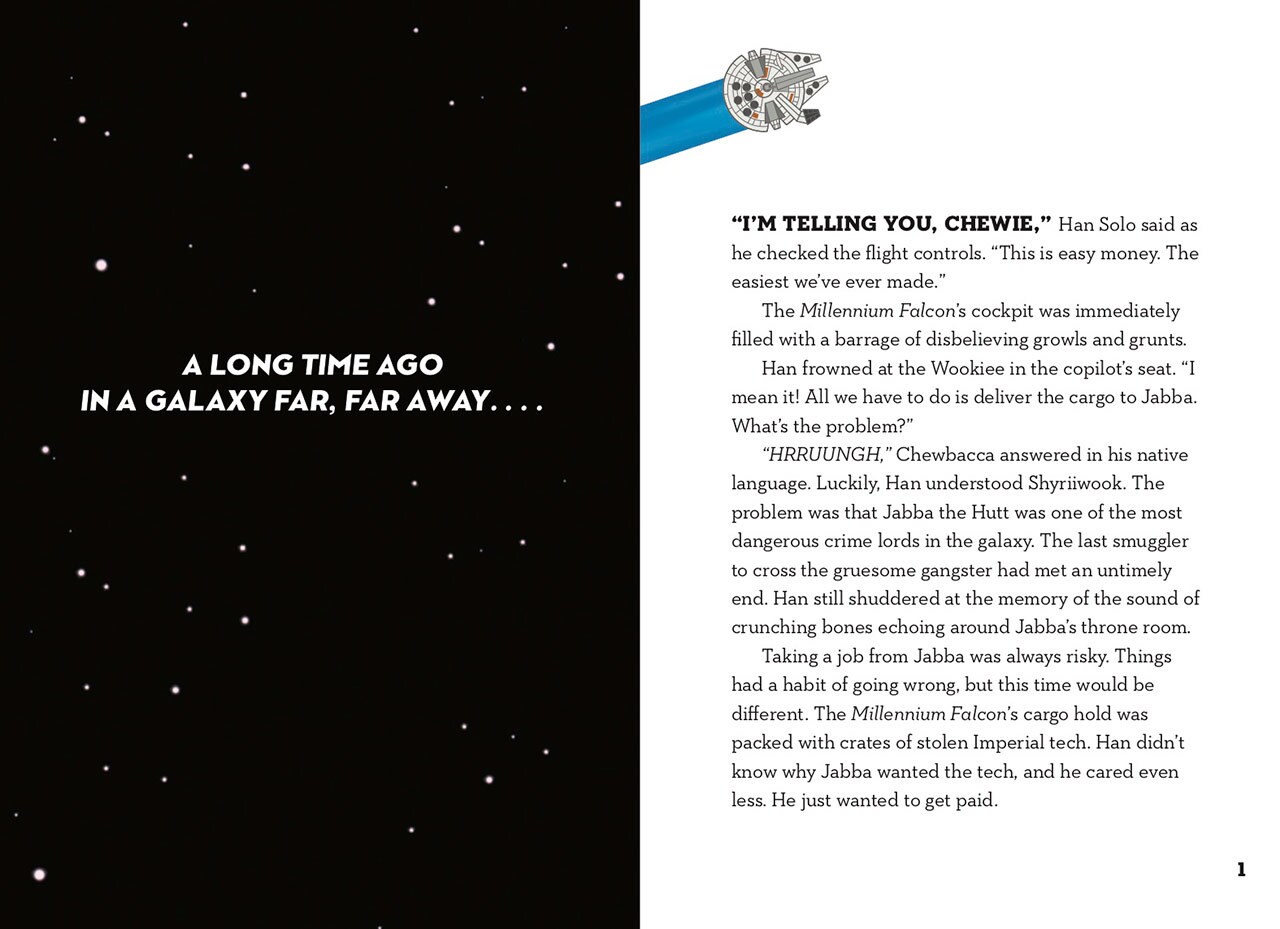
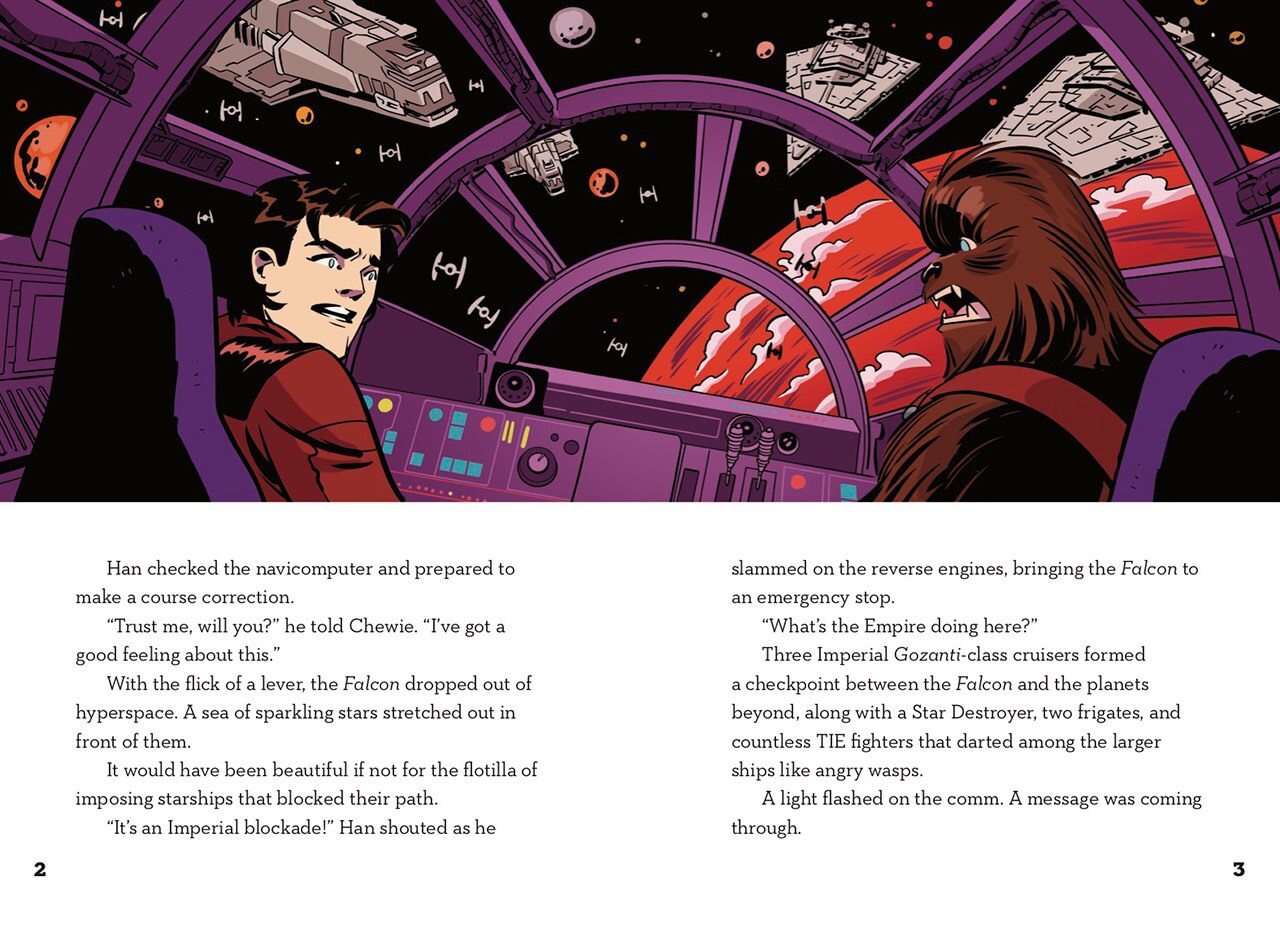
StarWars.com: I loved reading Han saying my favorite line from the Solo trailer — “I’ve good a good feeling about this” — right at the beginning of the book! Are there any crossovers between this book and the new movie?
Cavan Scott: In fact, there were a number of coincidences along the way. The first outline I put through mirrored events in Solo without me knowing, so tweaks had to be made!
StarWars.com: Tell us a bit about the new characters introduced in this book - Nodo, Meecha Odon, Lallani etc.
Cavan Scott: Nodo owns an interplanetary chop shop on a remote jungle planet. He receives stolen ships and breaks them down into parts or changes their registration to sell them on. He has a small band of mechanics and engineers who don’t ask too many questions, and has sidelines in various other criminal activities from kidnapping to blackmail. Meech is a young Twi’lek who works for him, and takes an interest in the Falcon as soon as Han and Chewie arrive on Nodo’s planet.
Lallani is a Quarren crime boss, who has employed Nodo’s services from time to time. She is ruthless and definitely knows how to hold a grudge, especially against her rivals in the galactic underground. She also knows how such feuds can also come home to roost so surrounds herself with highly trained Mandalorian mercenaries.
StarWars.com: Is Nodo a new alien species in the Star Wars universe and if so what was your inspiration for the look of this character? Did you pass on any visual inspirations for this character to Elsa for her illustrations?
Cavan Scott: I was asked to provide a series of illustration briefs for Elsa, which included Nodo who, yes, is a member of an as-yet-unnamed race. This is what I sent: "Nodo is a tall reptilian as tall as Chewbacca, with four muscular arms, a thick neck and green scales. His eyes are like that of a snake, as he has a wide mouth full of crocodile-teeth. He has a blaster in one of his hands, and a tool belt hanging from his hip.”
I just love Elsa’s interpretation. I certainly don’t think we’ve seen the last of him!
Elsa Charretier: Cavan’s descriptions were short, but very straightforward and I was able to start working on characters before talking to him. I think it’s sometimes best to come with your own idea on what the writer is suggesting. Because it is your own interpretation of their words, it might spark new ideas, things the writer hadn’t thought about. After that, of course, collaboration is key. Although you want to be able to bring your personality to a project, you also want to respect the writer’s view.
Regarding the design itself, it’s mostly about figuring out what the character projects. Simple shapes will tell you a lot about a character personality. Curvy shapes are considered friendliest and will evoke likable characters, square-like shapes convey stability and confidence, and triangular shapes are common in villains/bad guys designs. I tried to instill a little bit of basic theory in all their designs.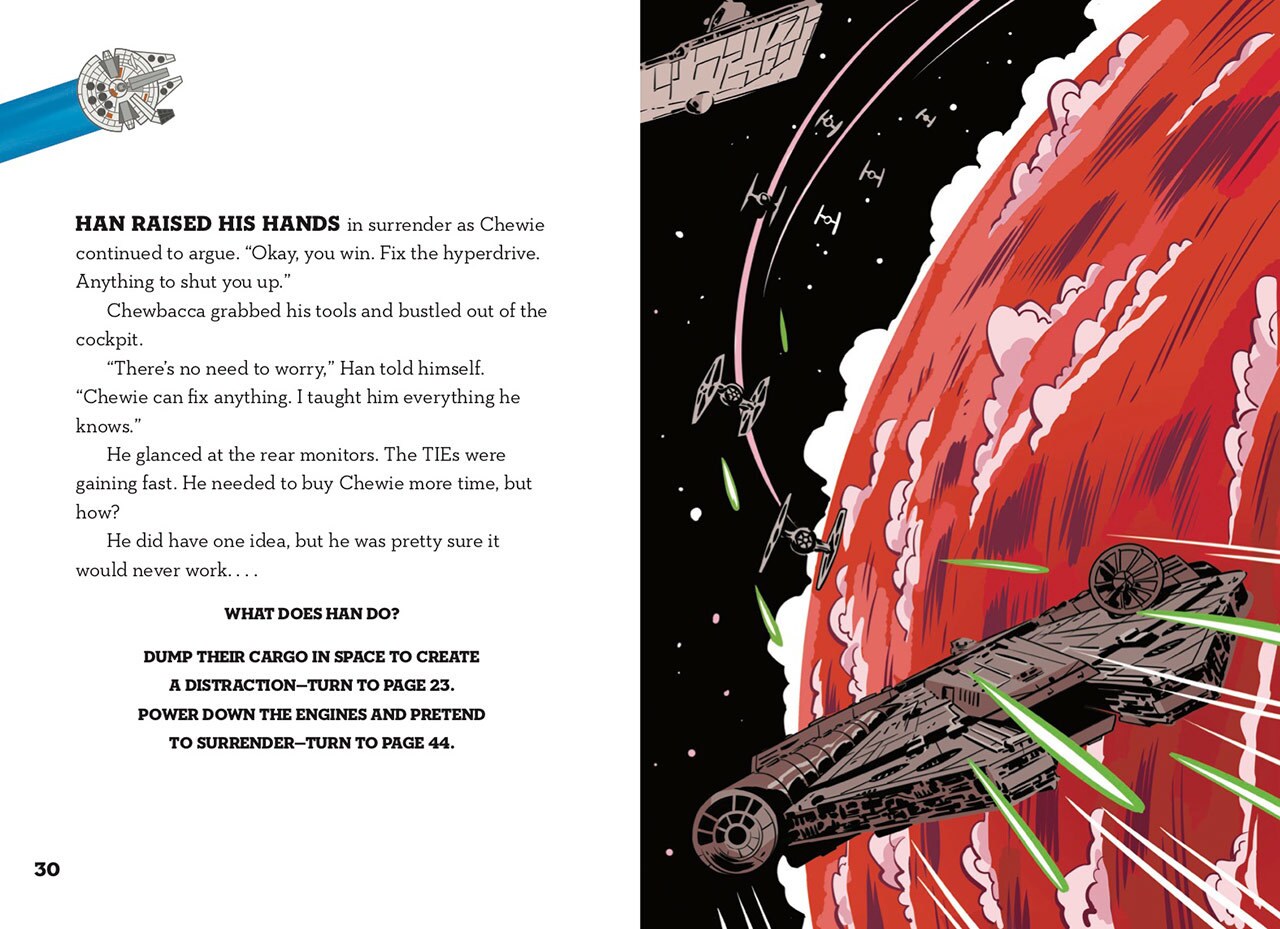
StarWars.com: Cavan, why did you decide to have some new characters from established Star Wars alien species [Twi’lek and Quarren] while other characters were new to the Star Wars universe [Skreech as a Hoopaloo for instance]? I’m also curious about the Lammaxian turkeys and if they had ever shown up in a Star Wars story before.
Cavan Scott: Whenever I write Star Wars I try to balance the reappearance of familiar species with the introduction of new aliens. While you need recognizable creatures, I think it’s important that not every alien is something we’ve seen before. It’s a big galaxy out there, teaming with life on thousands of worlds. Always having characters coming up against familiar species not only gets boring, it makes the Star Wars universe seem smaller. We don’t want the likes of Han or Chewie to have seen everything already. There needs to be surprises for our heroes and, in turn, the readers too.
The scruffy Lammaxian turkeys make their first appearance in the book, although Lammax itself was mentioned in the Star Wars roleplaying game back in 1997. I love dropping little references in like this, and who knows, perhaps the Lammaxian turkeys will become a delicacy the galaxy over.
StarWars.com: Were the new characters easier or more challenging to draw than beloved characters like Han and Chewie?
Elsa Charretier: Easier, definitely. Iconic characters like Han and Chewie can be a challenge, honestly. First, there’s this voice going in a loop in your mind “You better not screw that up!” And there are already hundreds of interpretations of those two. Some absolutely brilliant. So, of course, it’s a lot of pressure.
StarWars.com: Were you working on the art for this book at the same time Cavan was writing it or did you get to read the book first?
Elsa Charretier: I had the chance to read a full script before I started laying out the illustrations. I didn’t know what to expect at all, and I loved it. I read the entire script in one sitting and I couldn’t wait to get to the board. Artists work long hours, it’s a grueling profession, and you need that fire, that energy that pushes you to keep going. Working on illustrations without any context is tough for me, because I’m less invested, but Cavan’s script was so much fun I had an incredible time on this book.
StarWars.com: I loved the dynamic reds and oranges used in the illustrations for the new unnamed planet in Han & Chewie. Did you test out different shades of red and orange for this project or did you always know you wanted to use bold colors?
Elsa Charretier: I rarely color my work, and when I do, since I’m not a colorist, I go as simple as possible. My style is cartoony and I’ve always found that bold colors worked best. So that was definitely the original intent, but I went a different direction at the beginning. More purple and pink shades than reds. After talking with the editorial team, we went for what you can see in the final illustrations. And it’s definitely for the best!
StarWars.com: Are there any illustrations you created for this book that didn’t make the final version of the book?
Elsa Charretier: All of them made the cut but we did change the format on one of them. On one picture Han and Chewie were surrounded by Mandalorians, and in the final picture, we pulled closer on our two heroes and kept the bounty hunters out of the shot.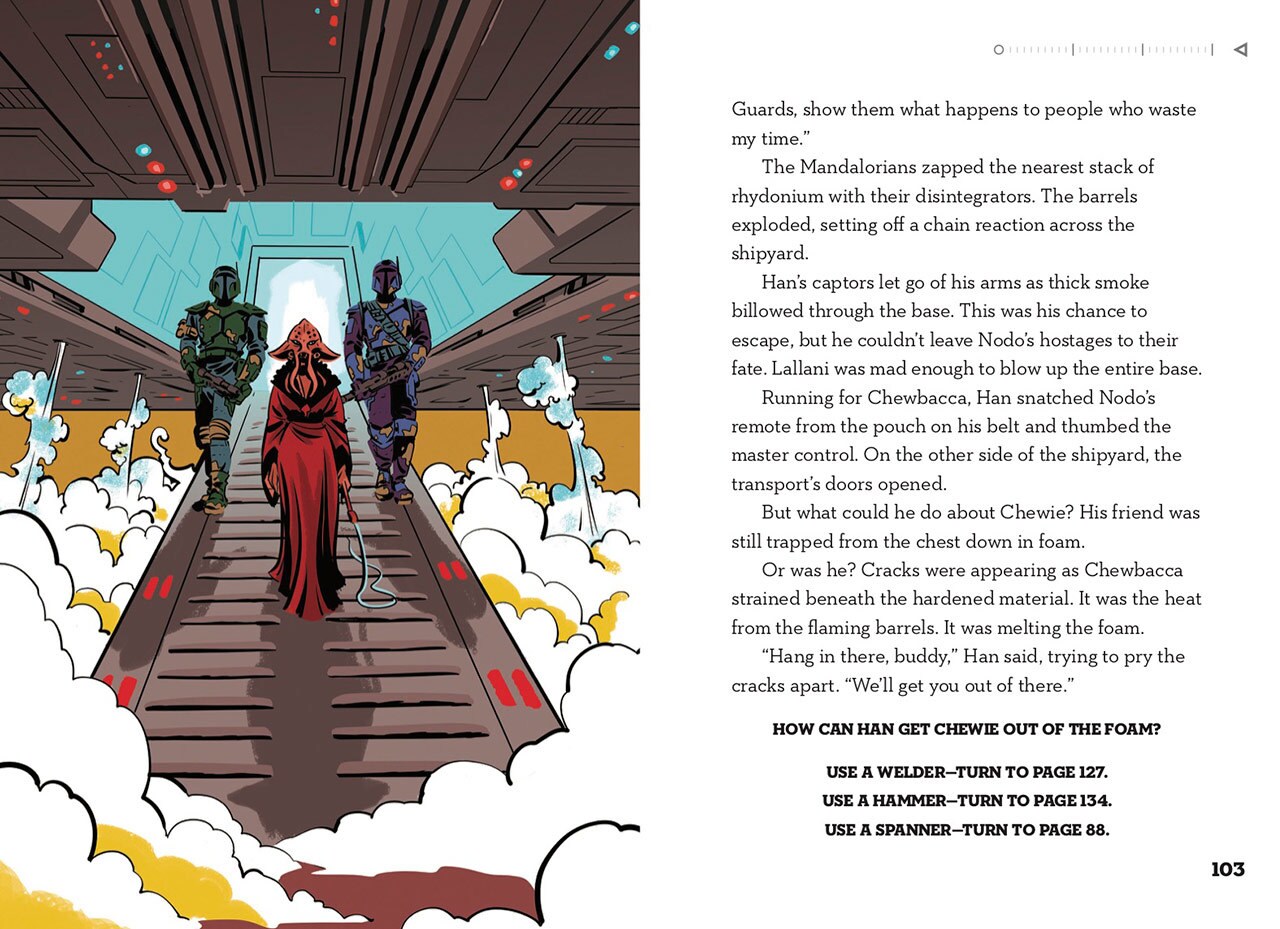
StarWars.com: There are over twenty possible outcomes to this story. How did you organize your work for this project and not get completely lost?
Cavan Scott: I had a big flow-chart that mapped out all the possible solutions and outcomes. Everything was color-coded from the correct canon path to all the off-shoots. The trick was not to get carried away. It would have been all too easy to give the story over fifty outcomes, maybe even more, but one of the tasks in writing a book like this is to drop in clues about the way the story should run, so if readers find themselves guiding Han and Chewie into a sticky situation, they can go back and make different choices to lead the story through to its logical conclusion.
StarWars.com: Do you have any hints for readers about how to answer the questions [go with your gut, etc.]?
Cavan Scott: Try to think like Han and remember that everyone’s favorite scoundrel doesn’t always follow the most heroic path, especially this early on in his life.
Amy Richau is a writer, lifelong Star Wars geek, and diehard Denver Broncos fan. You can find her on Twitter @amyrichau and more of her writing on FANgirl Blog.




